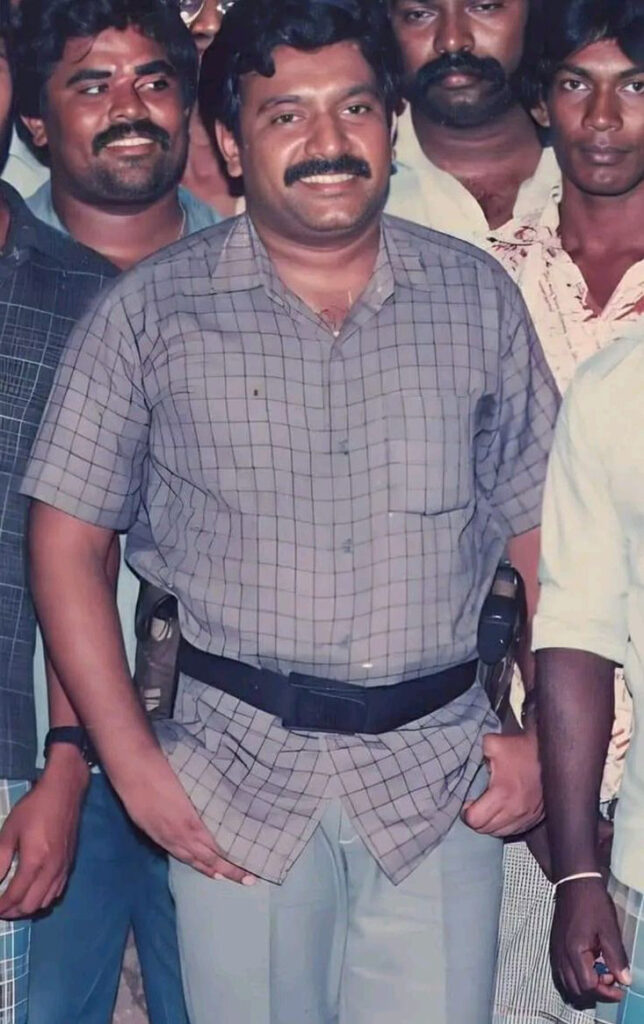The disbelief among some Tamils regarding the demise of Prabhakaran has its roots in the post-2009 activities and stance of the LTTE’s overseas branches and influential pro-LTTE factions in Tamil Nadu. These branches, financially robust and controlling a network of revenue-generating ventures and contributions, faced a radical shift in purpose following the LTTE’s military defeat.
The overseas operations of the LTTE, once a mighty finan-cial pillar supporting their war efforts with Prabhakaran at its heart, found themselves in uncharted waters. The death of Prabhakaran ostensibly pulled the rug from under these opera- tions. The raison d’être for their fundraising and commercial enterprises seemed to disappear into thin air.
Yet, in this vacuum of official mourning, a different narra-tive began to simmer. Despite Kumaran Pathmanathan or KP, the LTTE’s chief arms procurer, declaring Prabhakaran’s death in May 2009, a conspicuous absence of formal remem- brance by political parties sympathetic to Tamil rights or those aligning with Prabhakaran’s ideologies left a palpable void. This silence around his death anniversa- ry did not go unnoticed. It became the fertile soil that sprouted the beguiling tale that Prabhakaran might still be alive. This omission, whether intentional or not, offered a glimmer of hope, or perhaps denial, that was skillfully exploited by those perpetuating the scam, resonating with segments of the Tamil community who yearned for a different truth.
In the latter part of 2009, the over- seas operations of the LTTE faced a major quandary. The group, led by Perinbananayagam Sivaparan, known as “Nediyavan,” in Norway, along with other key LTTE activ- ists, chose to deny Prabhakaran’s death and promote the narrative that he was still alive. This stance was in direct opposition to Selva- rasah Pathmanathan, or KP, who initially announced Prabhakaran’s survival but later acknowledged his demise and called for mourning.

The denial of Prabhakaran’s death by Nediyavan led to a rift within the LTTE’s overseas factions, with KP and others who accepted Prabhakaran’s death find- ing themselves increasingly isolated. KP’s later arrest further consolidated Nediyavan’s control.
This lack of official acknowledgment from the LTTE’s overseas branches meant that there was no formal commemoration for Prabhakaran or other high-rank- ing LTTE members killed in 2009. Annual observanc- es like “Maaveerar Naal ” (Great Heroes Day) didn’t specifically acknowledge Prabhakaran and those killed in Mullivaikkal.
In Tamil Nadu, despite initial claims of Prabhakaran’s survival by some politicians, over time, many either changed their stance or remained silent, except for a few like Nedumaran, who steadfastly maintained that Prabhakaran was alive.
The enduring enigma surrounding the fate of Prab- hakaran is further compounded by the organization’s historical propaganda machine and the perceptions held by his supporters. Over the years, the LTTE meticulously cultivated an image of Prabhakaran as an invincible, almost superhuman figure. This portrayal was reinforced through numerous songs and narra- tives that glorified him. Such propaganda played a significant role in shaping the belief among his follow- ers that Prabhakaran was beyond defeat and death.
This belief was further bolstered by past instances where both the Sri Lankan and Indian governments prematurely declared Prabhakaran dead, only for him to resurface, alive and active. These occurrences reinforced the myth among a few of his followers and sympathizers that Prabhakaran was somehow immune to death. This backdrop of historical misinformation and the perceived invulnerability of Prabhakaran has been a crucial factor in sustaining the belief among certain sections of the LTTE and its supporters that he could still be alive despite official confirmations of his death.
Amidst this, various factions and groups claiming to represent the official overseas LTTE emerged, each trying to influence Tamil politics in Sri Lanka and Tamil Nadu. Some overseas elements also report- edly financed and encouraged violent attempts in Sri Lanka, although most were thwarted.
This complex situation led to a fragmented and weak- ened overseas LTTE, with individual countries or cities’ LTTE elements operating autonomously. The properties and businesses previously under LTTE con- trol were often appropriated by those in whose names they were registered. Meanwhile, the pro-Tiger world remained divided over Prabhakaran’s fate, leading to a range of speculative claims and rumors about his survival and whereabouts.



